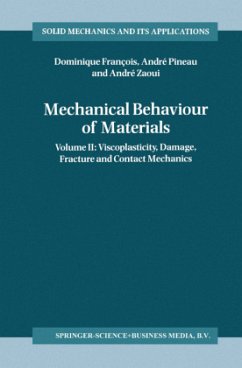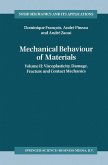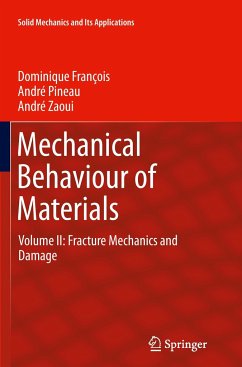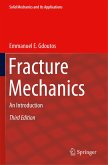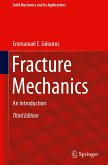Designing new structural materials, extending lifetimes and guarding against fracture in service are among the preoccupations of engineers, and to deal with these they need to have command of the mechanics of material behaviour. The first volume of this two-volume work deals with elastic and elastoplastic behaviour; this second volume continues with viscoelasticity, damage, fracture (resistance to cracking) and contact mechanics. As in Volume I, the treatment starts from the active mechanisms on the microscopic scale and develops the laws of macroscopic behaviour. Chapter I deals with viscoplastic behaviour, as shown, for example, at low temperatures by the effects of oscillatory loads and at high temperatures by creep under steady load. Chapter 2 treats damage phenomena encountered in all materials - for example, metals, polymers, glasses, concretes - such as cavitation, fatigue and stress-corrosion cracking. Chapter 3 treats those concepts of fracture mechanics that are needed for the understanding of resistance to cracking and Chapter 4 completes the volume with a survey of the main concepts of contact mechanics. As with Volume I, each chapter has a set of exercises, either with solutions or with indications of how to attack the problem; and there are many explanatory diagrams and other illustrations.
From the reviews:
"This book is the result of a life's work by some notable scientists and, indeed, the amount of information and knowledge the reader can gather here is impressive. This is a stimulating book which should be seen both as a reference tool and as a useful starting point for each topic it touches." (Maurizio Vianello, Mathematical Reviews, March, 2014)
"This book is the result of a life's work by some notable scientists and, indeed, the amount of information and knowledge the reader can gather here is impressive. This is a stimulating book which should be seen both as a reference tool and as a useful starting point for each topic it touches." (Maurizio Vianello, Mathematical Reviews, March, 2014)

